Bioherbicide effect of aquatic macrophytes in agricultural ecosystems

Greetings to all users of the #Hive platform, especially to friends of the #STEMsocial team, this manuscript serves to socialize experimental data obtained in the field, to evaluate the bioherbicide effect and synergistic action exhibited by the biomolecules of the aquatic macrophyte Eichhornia crassipes, it is important to emphasize that these results correspond to my research line attached to the National University Experimental South of the Lake - Venezuela (UNESUR), which aims to develop agricultural management alternatives in ecosystems intended for the cultivation of musaceae.
Introduction
In the agricultural activity, products of synthetic origin whose active ingredients act as bactericides, insecticides, herbicides, among others, are used as agrochemicals to control the appearance of pathogenic diseases, pests, highly competitive weed species, and other pathologies that complicate crop production.
In this sense, it is important to mention that the application of these synthetic inputs in agricultural activities usually generates harmful effects on agricultural ecosystems, and also compromises human health, due to their non-biodegradable and toxic constitution.
Now, it is known that plant species have the ability to synthesize biomolecules, which equal and in some cases exceed the effect of agrochemicals, hence the interest of the scientific community with sustainable approaches, in developing research aimed at evaluating the allelochemical potential of plants in different natural and artificial ecosystems, in the search to determine the action of these biomolecules, either as biobactericides, bioinsecticides or bioherbicides.
For the above described, the objective of the post, is to know the synergistic action of biomolecules of the aquatic macrophyte Eichhornia crassipes, and its effect as bioherbicides in the banana crop Musa sp. cv. Hybrid 'Fhia-21'.
Conceptualization
Biomolecules
Biomolecules are the substances responsible for the biological processes that occur in living organisms, in this case, the metabolic reactions that occur in plant species.
Now, a plant organic biomolecule is basically composed of four chemical elements, as follows:
- Carbon
- Hydrogen
- Oxygen
- Nitrogen
These four elements participate in all metabolic reactions at the cellular level and are the essential constituents of primary metabolites, such as carbohydrates, proteins, lipids and nucleic acids, necessary for the survival, growth, development and reproduction of plant organisms.
Likewise, it is necessary to indicate that there are other biomolecules, whose intra and interspecific participation allows them to function in the defense mechanisms in plant species, acting as natural allelopathic agents with bactericidal, insecticidal and herbicidal properties, these biomolecules are called secondary metabolites, and we can mention terpenoids, phenols and alkaloids.
Synergistic action
Synergistic action is nothing more than the set of interactions that act to perform a specific function, in this section, the allelochemical action of biomolecules present in the aquatic macrophyte Eichhornia crassipes, and its effect as a bioherbicide and phytotoxic substance, on weeds that compete for space, water and light in the banana crop.
Biomolecule production in the field
Species and study area
In order to obtain sufficient organic wastes that provide bioherbicide-type secondary metabolites from the dry biomass of the aquatic macrophyte Eichhornia crassipes, we took advantage of the flooding of 10 hectares (ha) with water from the Chama River (South of Lake Maracaibo - Venezuela), highly contaminated with E. crassipes, which allowed the entry of high volumes of fresh biomass from Bora.
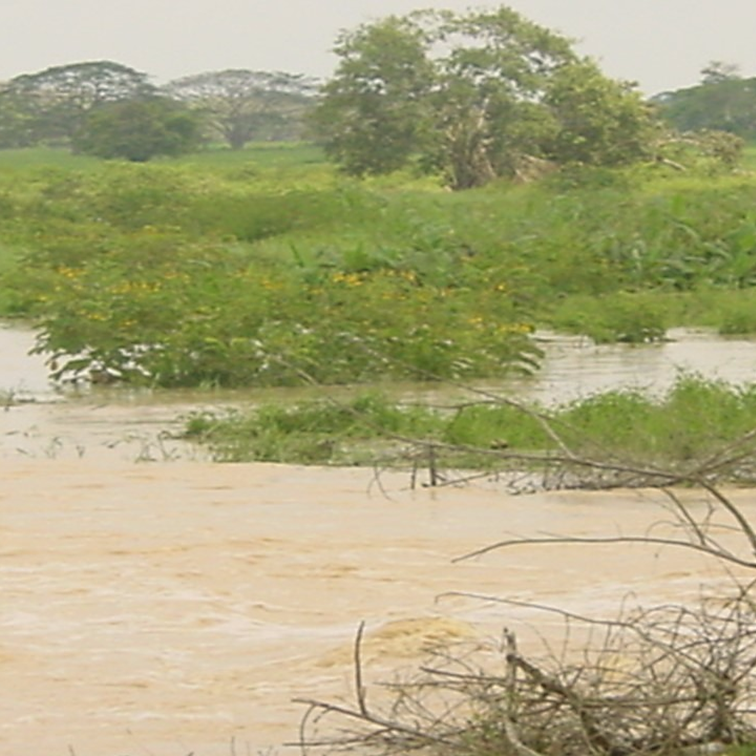
Fig. 2 Flooding of the area intended for planting of 1,200 banana saplings Musa sp. cv. Hybrid 'Fhia-21'. Author: @lupafilotaxia.
Drying
Of the total flooded area, it was decided to use the high topographic area, allocating 5 ha, for planting 1,200 tillers/ha and establishing for this approach, drainage channels and using agricultural motor pumps to remove excess water, the extension of land with visible beds of Bora biomass, was subjected to natural drying for 2 weeks, after this time the process of planting the plantain tillers Musa sp. cv. Hybrid 'Fhia-21'.
Extraction of biomolecules
Dry biomass samples were collected from Eichhornia crassipes arranged as a bed in the 5 ha, for the purposes of the test, only the organographic structures of leaves and stems were considered, the material was transferred to the Chemical Analysis laboratory of UNESUR, where it was ground to obtain 1.0 mm particles, the powder obtained was prepared according to the Cyted technique.
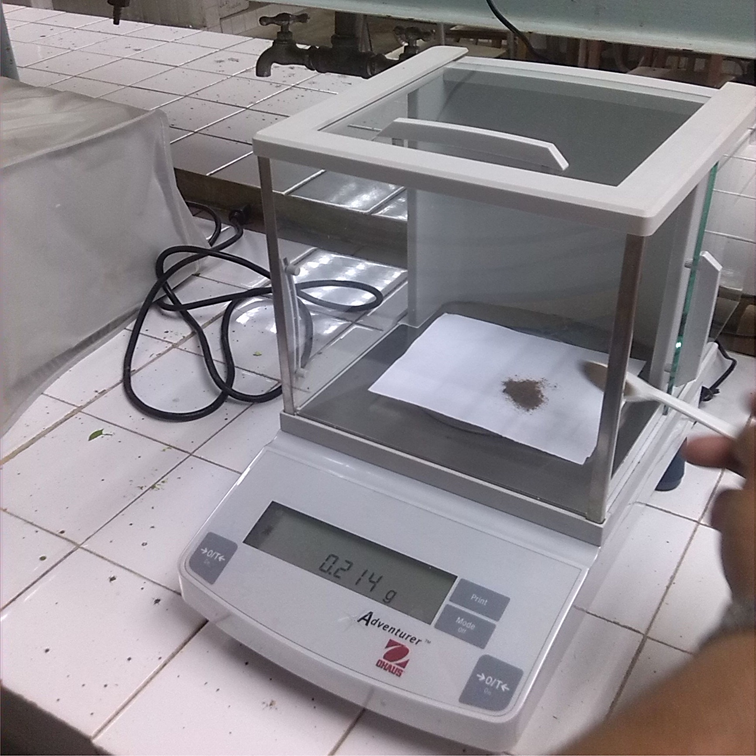
Fig. 3 Weighing of the powder obtained by grinding leaves and stems of Eichhornia crassipes dry biomass. Author: @lupafilotaxia.
Identification of biomolecules
Thin layer chromatography and spectrophotometry (UV-VIS 4802 Spectrophotometry, Model: UNICO of the Chemical Analysis Laboratory of UNESUR) were used to identify the biomolecules present in the extract obtained from the dry biomass of Eichhornia crassipes, using thin layer chromatography and spectrophotometry (UV-VIS 4802 Spectrophotometry, Model: UNICO of the Chemical Analysis Laboratory of UNESUR). The reaction of metabolites was carried out by the colorimetric method.
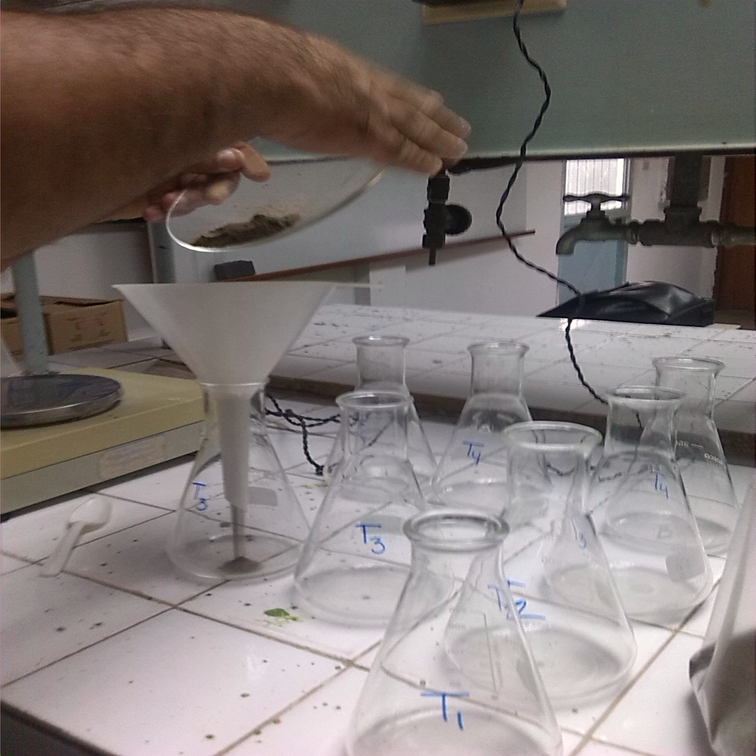
Fig. 4 Addition of leaf powder and dry biomass stems of Eichhornia crassipes, in Erlenmeyer flasks, for the formation of the aqueous extract. Author: @lupafilotaxia.
Bioherbicide evaluation
To determine the bioherbicide activity of biomolecules of Eichhornia crassipes, an experiment was carried out consisting of three treatments, described as follows: control (chemical control of weeds based on glyphosate and nicosulfuron); no control (soil with presence of weeds); control (soil with presence of weeds); control (soil with presence of weeds); control (soil with presence of weeds); control (soil with presence of weeds).
The dry biomass bed Eichhornia crassipes, was included as a bioherbicide treatment, in each treatment the soil cover by weeds was evaluated every 30 days, and to know the damage of these on the crop of Musa sp. cv. Hybrid 'Fhia-21', the morpho-phenological behavior of the banana hybrids was evaluated during 3 months, which is the critical period of growth and development.
The measurement of the variable soil cover by weeds was carried out visually, using a scale from 0 to 6:
Table. 1 Scale from 0 -6, to know the soil cover by weeds. Author: @lupafilotaxia.
Results - effect of biomolecules
Absence and presence of biomolecules
The extract obtained from the dry biomass of Eichhornia crassipes, allowed the identification of secondary metabolites, present or absent in the organographic structures of leaves and stems, as shown in the following table:
Table. 2 Absence (-) and presence (+) of biomolecules in dry biomass extract of Eichhornia crassipes. Author: @lupafilotaxia.
Soil cover by weeds
The results showed differences between the treatments considered, which remained at the 3rd month around 10% for the dry biomass bed of Eichhornia crassipes and 75% in the treatment without weed control; however, for the chemical control there was 0% presence of weeds, these data are displayed in the following table:
Table. 3 Percentage soil cover value by presence of weeds in the crop of Musa sp. cv. Hybrid 'Fhia-21', at 3 months. Author: @lupafilotaxia.
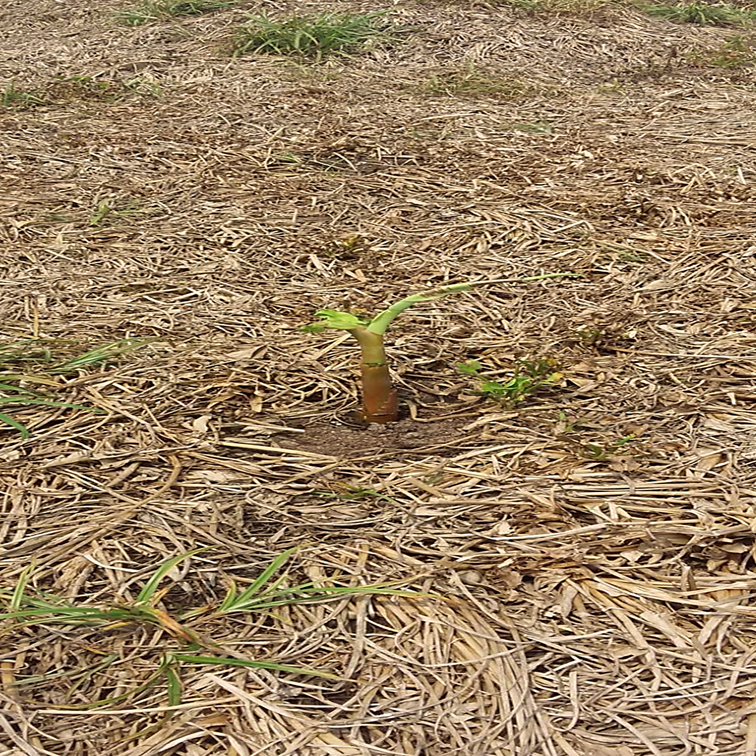
Fig. 5 Dry biomass bed of Eichhornia crassipes. Author: @lupafilotaxia.
Morpho-phenological response of banana hyphal shoots
In the chemical control treatments and in the dry biomass bed treatment of Eichhornia crassipes, no visible damage was found in the growth and development of the plantain tillers, in contrast to the tillers without weed control, with morpho-phenological affectation, Therefore, the test demonstrates the bioherbicide toxicity effect of the biomolecules found in this aquatic macrophyte, as a control in the exponential growth of both monocotyledonous and dicotyledonous weeds that compete with the crop was observed.
Table. 4 Morpho-phenological behavior of banana tillers Musa sp. cv. Hybrid 'Fhia-21'. Author: @lupafilotaxia.
Avebriatura: C.Q (Chemical control), N.C (No control), D.B.E (Dry biomass litter of Eichhornia crassipes).
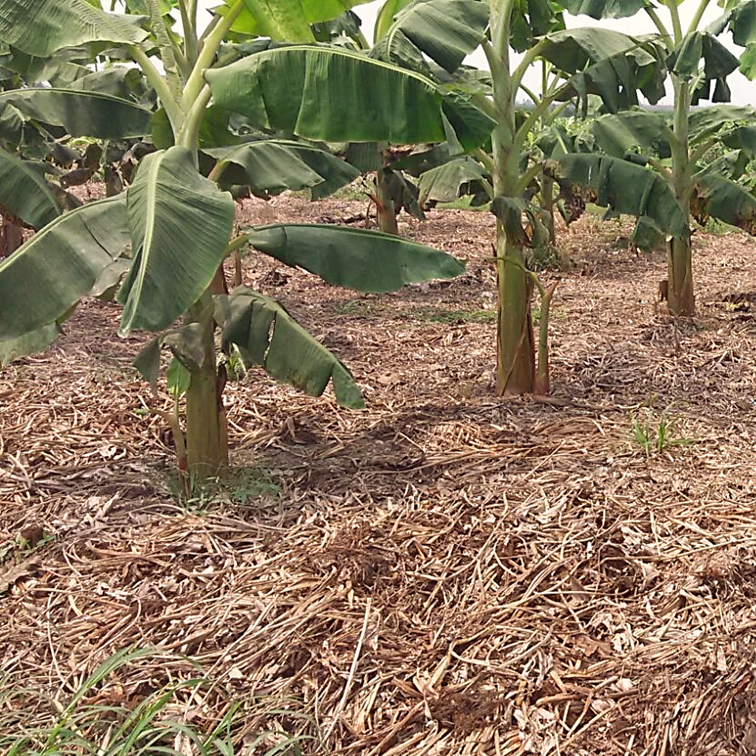
Fig. 6 Growth and development of plantain Musa sp. cv. Hybrid 'Fhia-21' at 3 months of age subjected to the control of biomolecules present in the dry biomass of Eichhornia crassipes. Author: @lupafilotaxia.
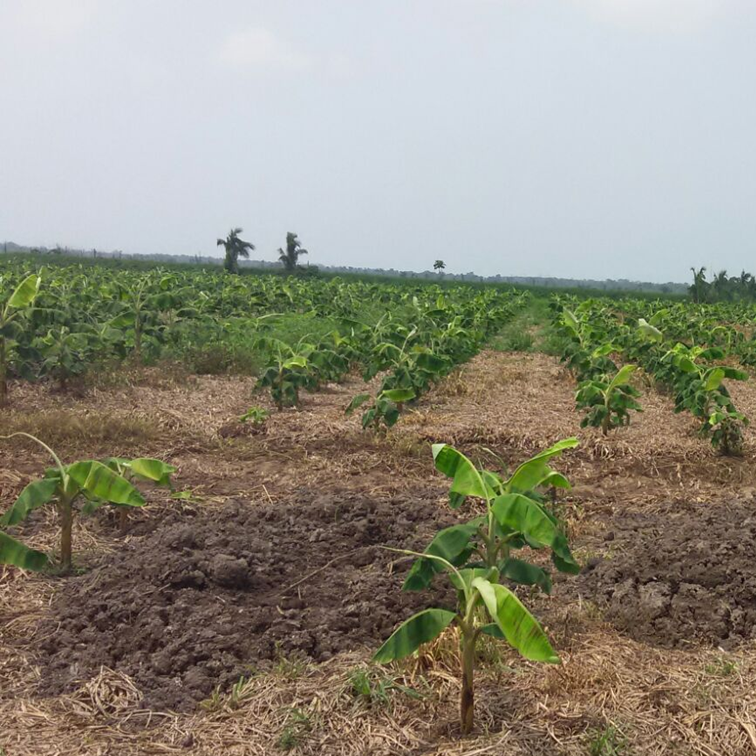
Fig. 7 Growth and development of plantain Musa sp. cv. Hybrid 'Fhia-21' at 3 months of age without weed control. Author: @lupafilotaxia.
The results reflect the presence of alkaloids, flavonoids and terpenes biomolecules, which have been reported for their allelochemical activity, acting similarly to herbicides. Therefore, their behavior in the leachates generated in the decomposition of Eichhornia crassipes, suggests some adverse effect on the growth of weed plants and their foliar structures, by reducing the presence of these species by 10% in the T3 treatment (Bora dry biomass bed) in contrast to T2 (No weed control) where the coverage was around 75%.
The morpho-phenological response of the plantain tillers is an agronomic interpretation that allowed estimating the phytotoxic effect of the biomolecules found in the dry biomass of Eichhornia crassipes, even though the best growth and development responses were observed in the tillers subjected to chemical control based on glyphosate and nicosulfuron (T1), the best growth and development responses were observed in the tillers subjected to chemical control of weeds based on glyphosate and nicosulfuron (T1), the results in T3 (Bora dry biomass bed) are of great value for the trial, considering that the values obtained did not show important alterations.
CONTRIBUTIONS OF THIS PUBLICATION
- The biomolecules found (alkaloids, flavonoids and terpenes), in the dry biomass of Eichhornia crassipes, present synergistic action, indicating the possible activity in leachates generated from the organic wastes of this aquatic macrophyte, inferring from them their phytotoxic and bioherbicidal action on weed species, on the other hand, the allelochemical effect against weed species exhibited by biomolecules of Eichhornia crassipes, favors the growth and development of plantain Musa sp. cv. Hybrid 'Fhia-21', and this practice can be incorporated into agronomic management programs for this crop.
BIBLIOGRAPHICAL REFERENCES CONSULTED AND CITED:
[1] Chand L., Moolchand M., Singh R. Phytochemical study of Eichhornia crassipes in Sri Ganganagar District of Rajasthan, India. J Pharm Phytochem. 2014; 3: 176 - 177. Article: Online access
[2] Anaya L. Ecología Química. Ed. Plaza y Valdez, México. 2003; 349. Article: Online access
[3] García A, y Sosa L. Caracterización agronómica del híbrido de plátano FHIA-21 (Musa AAAB) resistente a sigatoka negra (Mycosphaerella fijiensis M.) en el Municipio Baralt, Venezuela. Rev. Fac. Agron. (LUZ). 2001; 18: 117-123. Article: Online access
[4] Lata N. Preliminary phytochemical screening of Eichhornia crassipes: the world’s worst aquatic weed. Journal of Pharmacy Research. 2010; 3; 6 :1240 – 1242. Article: Online access
[5] Pellitier S. Alkaloids: Chemical and Biological perspectives. 1983; 11. Article: Online access
[6] Rizvi S., and Rizvi V. Allelopathy. Basic and applied aspects. Springer Science & Business Media. 2012. Article: Online access
ATTENTION
Readers and followers
If you wish to read more scientific articles in English or Spanish, of excellent academic quality, do not hesitate to visit #STEMSocial and #STEM-espanol, communities that promote scientific content mainly in the areas of Science, Technology, Engineering and Mathematics.
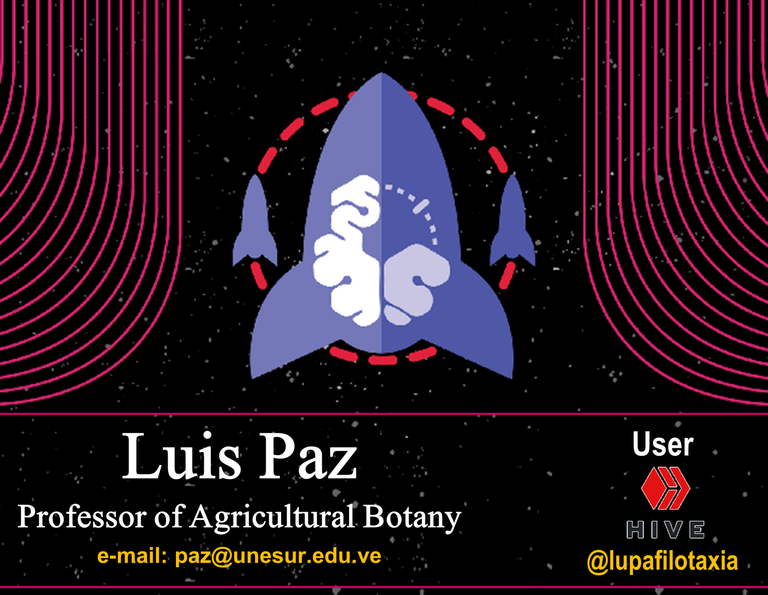
0
0
0.000
https://twitter.com/lupafilotaxia/status/1353895706076078081
#Posh Twitter:
https://twitter.com/lupafilotaxia/status/1353895706076078081
this was totally useful to me.
Greetings @hariton
Precisely that is the core idea, that the publication is useful for users coexisting on the platform. I'm glad, that you find information of relevance. Thanks for visiting the blog, best regards.
thanks
Dear @lupafilotaxia,
Amazingly impressive article. First of all, such an important subject. And then to have your first-hand account of your own research. It's a privilege to read your material. I believe your work is the only reasonable path to a better future for our planet, for our children. You use resources available to all. But industry, and governments look the other way. They try to solve ecological problems by creating more problems.
Thank you for the great pictures. They give a sense of immediacy to the article. And thank you for the work you do.
I wish you and your family health and peace.
Regards and Respect,
AG
Greetings @agmoore
It is gratifying to have again your visit to the blog, what you say about government policies and companies in the agricultural sector is totally true, even in my country these policies prevail, however, in the area where I live (South of Lake Maracaibo - Venezuela) producers accompany our lines of research, and are receptive to the implementation of management alternatives with agroecological orientation. The other thing is that, in the university where I work, it is exclusively oriented to agricultural management with a sustainable approach. Best regards, be well.
Thanks for your contribution to the STEMsocial community. Feel free to join us on discord to get to know the rest of us!
Please consider supporting our funding proposal, approving our witness (@stem.witness) or delegating to the @stemsocial account (for some ROI).
Please consider using the STEMsocial app app and including @stemsocial as a beneficiary to get a stronger support.